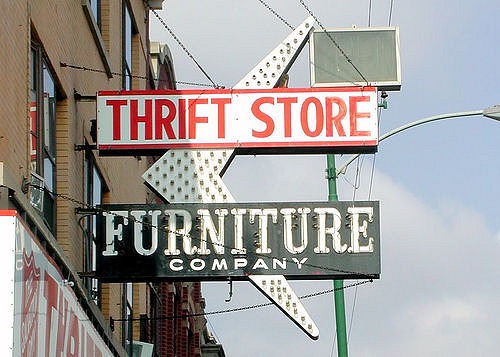When a Retailer Tries to Upsell Your Kid
On a cold Saturday morning, my first grade daughter set out to spend some money.
She’d come into a decent haul from grandparents during her recent birthday, and she’d decided she wanted to put it to use at Build-A-Bear Workshop, a popular place where children can assemble and accessorize their own stuffed animals. My daughter is a true fan of stuffed animals, but she had never purchased one from Build-A-Bear before. After spending years looking at her sister’s bears, she decided she wanted one of her own.
My 1st grader is a deliberate and decisive soul, and that fact was on display that day. She carefully picked through the various stuffed animals — despite the name, the store has more than just bears — before settling on a charming little dog. She then walked back to the accessories, looked them over carefully, and decided on a handful of them.
Enter The Upsell
Heading back up front, she presented her dog to one of the workers, an upbeat middle-aged lady who nodded and directed her to head over toward the great stuffing machine along the side wall.
On the way, however, the worker made a slight detour, over to a large touch-screen display. Pausing there, the worker asked my daughter, “What kind of sound would you like?”
The “sound” in question related to a small $5 programmable box that would go inside the bear (or, in this case, dog). We had looked at the sound boxes earlier with our daughter and explained that they cost extra. The worker, on the other hand, had made no mention of the price to my daughter, nor had she asked my daughter if she actually wanted this accessory. The worker, instead, had framed the question as if the inclusion of this $5 add-on was an obvious one.
The worker — presumably operating according to the company’s game plan — was engaging in a low-key but very obvious upsell … or “suggestive sell,” as I heard it called in a job long ago.
My wife and I said nothing, although, in talking later, we both took note of the situation in roughly the same way. We also both — independently of talking to one another — waited to see how our daughter would handle it.
My daughter said, “I don’t want a sound.”
“Really?” the worker said. “You don’t want a sound?”
My daughter shook her head for emphasis.
“Oh,” the worker said. “That’s unusual.”
That peeved my wife, for reasons that are probably self-evident, although she kept quiet. I just smiled a little and said, “Knowing her, that’s not a surprise.” My daughter likes stuffed animals, but things like noises are not interesting to her.
Again we proceeded toward the stuffing machine. The worker sat down, started stuffing the dog, and said, “What scent would you like?”
I raised an eyebrow. “Scents” were small scented objects that went into the stuffed animals and gave them a distinct smell. For the second time in as many minutes, the worker had presented an upsell to my daughter without mentioning price, and by framing it in a way that implied the upsell was an obvious, natural purchase.
This time my wife did speak up because she knew our daughter was unaware of the extra charge for this product. “The scents are $3.50,” she said gently.
You’re probably wondering if this is the point where, for the second time, my daughter again said no. Not this time. “I would like a scent,” my daughter said. The worker showed her a few, and she settled on cupcake, which the worker put into the dog. My daughter, both then and later, expressed no regrets over the decision.
Retail and the Suggestive Sell
A couple of things before I go on. One, while I personally wasn’t the biggest fan of the upsell tactics I saw that day, I also suspect that most patrons of Build-A-Bear probably don’t bat an eye at such little add-ons or the way in which they are presented. In fact, most adults who bring their children there are probably paying for the experience, and they presumably don’t mind spending a little more to make their child’s purchase a memorable one. (Or if they do mind, they keep that little detail to themselves.) Our situation was a little different, because our daughter was actually making the purchase with her own money, given to her by others to spend as she saw fit. In her case, we weren’t the ones who stood to lose financially from upselling; she was.
Two, my wife and I have, collectively, worked in retail and in food service, and we are both very aware that suggestive sell is pretty much a reality in most stores, whether it be a retailer debit or credit card or a larger bag of fries with that burger. I don’t always like it, but I realize it is a generally accepted part of the retail landscape .. and that employees who don’t follow the playbook might not keep their jobs very long. (My beef with a certain other mall store is much bigger.) I don’t expect Build-A-Bear to change this policy anytime soon because it probably nets them a lot of extra cash, especially on high-margin extras.
A Teachable Moment
As we drove home, we talked about the experience. We talked in particular about how the experience was a reminder, for both children and adults, to talk about and be mindful of the importance of boundaries, self-advocacy, and saying no even when it might feel a little uncomfortable. It’s not easy for a first grader to say no to a friendly face at a children’s store, even with her parents standing right behind her … just as it isn’t always easy for many adults to say no when we’re encountering a soft upsell from a friendly salesman.
But both the fact that it’s a common sales tactic and the fact that we need to remember the word “no” both point to the same reality: namely, that when a suggestive sell is sprung on us, we’re not always equipped to make a thoughtful, informed decision about whether to take it. The retailer knows this and also knows that if we delay, we’re more likely to think better of it … which is all the more reason to remember that, in many situations, the benefits of politely declining usually outweigh the risks.
Sure, it’s possible we may regret the decision later, but it’s probably more likely that, later on, we may come to be glad we said no after we’ve had sufficient time to reflect and research on the choice. And, most of the time, it’s not usually a lost opportunity should we change our mind and say yes later.
In a way, I’m glad my daughter was able to face such a small test, in a relatively low-stakes environment. It gave us the opportunity to talk with her (and tell her we respected her decision to say no to the bark device). As parents, we hope that it better empowers her to navigate such situations in the future, when she’s older and, quite possibly, without her parents around … and when more money than just a few dollars may be involved.
That, after all, is a big part of what growing up is all about.







